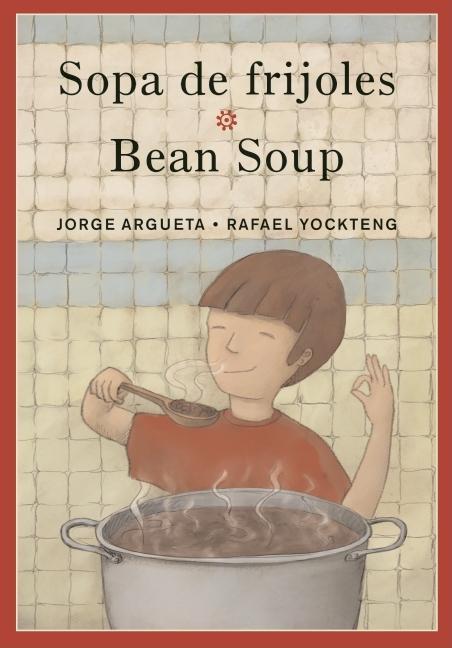Book Descriptions
for Bean Soup by Jorge Argueta and Rafael Yockteng
From Cooperative Children's Book Center (CCBC)
From The United States Board on Books for Young People (USBBY)
You can almost smell and taste the bean soup as you read this “recipe” poem full of vivid metaphors and similes. It’s a long, segmented poem spread out across fourteen pages of text (always on the left) accompanied by rectan gular paintings framed in white (always on the right). This pleasing, predict able format makes it easy to read either the Spanish or English poems—or both. The paper is thick and creamy, and the little boy pictured in every scene is an engaging “everyboy.” Argueta wrote both the Spanish and English versions, capturing the music of the poem in both languages. 2010 USBBY Outstanding International Books List, 2010 Cooperative Children’s Book Center (CCBC) Choices. smv
Translated by the author.
From the Publisher
This delightful recipe in poem form shows us all, young and old, how to make a heartwarming, tummy-filling bean soup
From gathering the beans, onions and garlic to letting them swim in the pot until the house smells wonderful and it’s time for supper.
A young boy helps his mother prepare a soup the whole family will enjoy using ingredients from Mother Earth. Onions are “yellow as the dawn,” beans are like stars spread out on the “sky of the table” and the water in the pot is “as deep as a little lake.” While the soup is cooking, the boy buries the cooking scraps under a tree in the yard “so Mother Earth keeps on growing flavors.”
Simply written, yet full of vivid imagery, Jorge Argueta’s verse and Rafael Yockteng’s animated illustrations make preparing bean soup a fun, almost magical experience. This book is a great family recipe/poem for those who already love bean soup — it is a comfort food for many — and for those who are looking for a delicious new healthy food.
Key Text Features
recipe
procedural text
Correlates to the Common Core State Standards in English Language Arts:
CCSS.ELA-LITERACY.RL.K.4
Ask and answer questions about unknown words in a text.
CCSS.ELA-LITERACY.RL.K.5
Recognize common types of texts (e.g., storybooks, poems).
CCSS.ELA-LITERACY.RL.2.4
Describe how words and phrases (e.g., regular beats, alliteration, rhymes, repeated lines) supply rhythm and meaning in a story, poem, or song.


